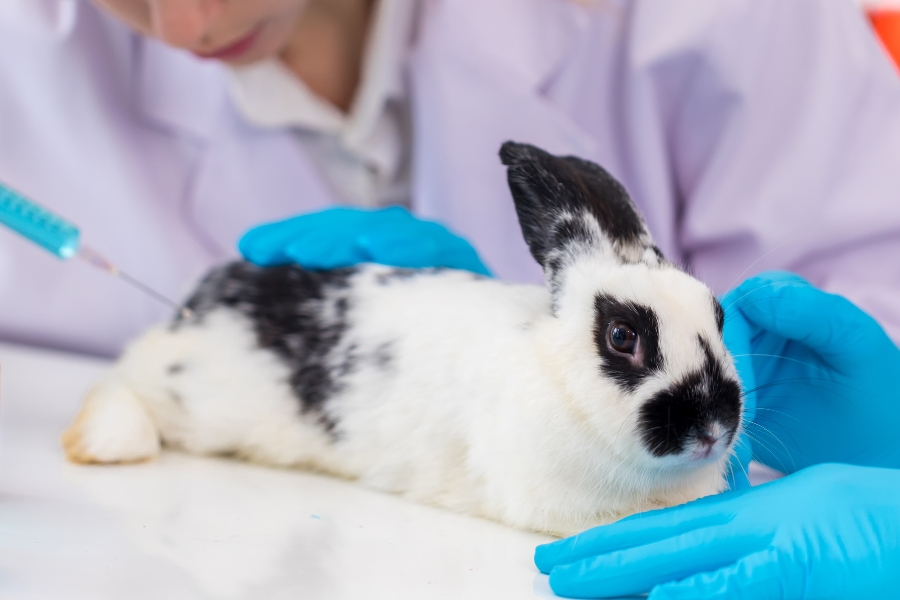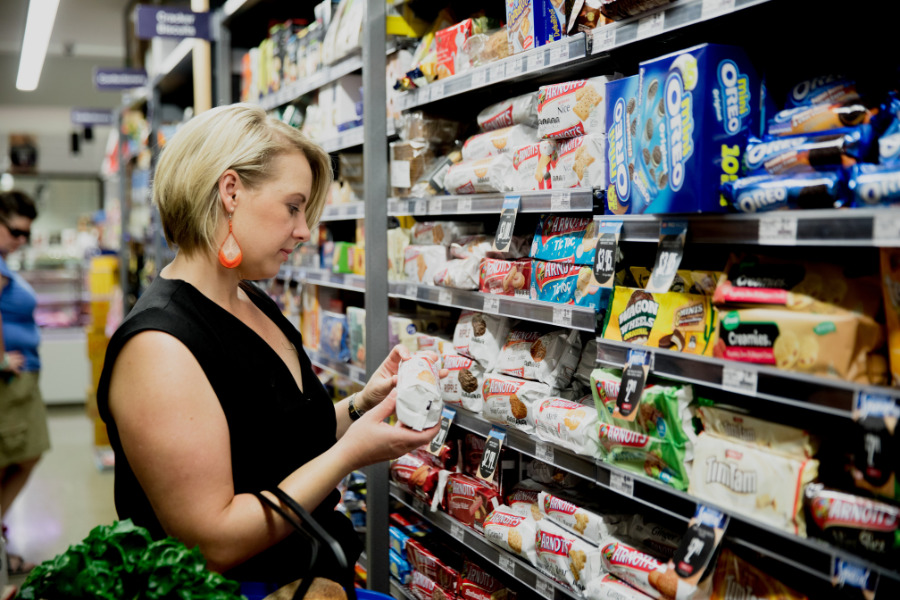Ever wonder how a food additive gets approved for human consumption? Spoiler alert: it’s not as clean-cut as you’d hope… and animals often pay the ultimate price.
Most food additives on supermarket shelves have one thing in common: they were tested on animals first. And we’re not just talking a casual “let’s see what happens” scenario. We’re talking high-dose, long-term, distressing testing that often ends in suffering or death for the animal.
Whether it’s an artificial colour, a preservative, a flavour enhancer or a sweetener, it’s likely that at some point it was force-fed to rats, mice, dogs, or rabbits, sometimes in massive quantities, before it made its way into your family’s food.
Let’s dive into how this testing works, what it means for the animals, and why it matters.
🧪 What does animal testing for food additives involve?
When a food company seeks approval for a new additive, it must submit toxicology data to regulatory bodies like FSANZ (Food Standards Australia New Zealand). Most of this data comes from animal studies.
Here’s how it typically works:
-
Acute and chronic toxicity studies: The additive is administered orally to animals, usually via a tube down the throat (called oral gavage), in gradually increasing amounts until a clear effect is seen.
-
Reproductive studies: Female animals are dosed throughout pregnancy and then monitored to see if their offspring are born with defects.
-
Carcinogenicity studies: Rats or mice are dosed every day for up to two years to check if cancers develop.
These animals are often housed in confined spaces, subjected to invasive procedures, and euthanised at the end so their organs can be dissected. The purpose? To determine a “safe” amount for humans, something called the ADI (Acceptable Daily Intake).
Many of these doses are 100-1000x higher than what a person would ever eat. Why? So that extreme outcomes can be observed to catch long-term effects. But does that reflect how people actually eat? Not really.

🐶 Food colour “sunset yellow” (110) and dog testing
Let’s take Sunset Yellow (110), a synthetic food dye still permitted in Australia and found in everything from lollies and soft drinks to snack foods and even some medications.
As part of its safety assessment, 110 was tested on beagle dogs in long-term toxicity studies. In one of the most cited studies, dogs were force-fed Sunset Yellow daily for 1 year. Researchers observed:
-
Vomiting
-
Weight loss
-
Lethargy
-
Liver enlargement
-
Altered blood chemistry
At the end of the study, the dogs were euthanised and dissected to evaluate internal organ damage.
Despite these findings, food regulators like FSANZ, EFSA (Europe), and the FDA (US) continue to allow Sunset Yellow in food products, simply because they claim that the average consumer eats a “safe” amount.
📚 Reference: UK Committee on Toxicity. Statement on the effects of mixtures of food colours and the preservative sodium benzoate on behaviour in children. https://cot.food.gov.uk/sites/default/files/cot/cotstatementadditives.pdf
An example of animal testing: https://inchem.org/documents/jecfa/jecmono/v17je29.htm
https://www.efsa.europa.eu/en/efsajournal/pub/1330
🔬 One additive at a time… but what about the cocktail?
Additives are generally tested in isolation and not with other additives to see how they react in the body together.
But have you ever eaten just one additive at a time?
Think about your average lunchbox snack/s; it could contain a concoction of artificial flavours, colours (like 102, 110, or 133), preservatives, and sweeteners… all at once. Yet we have almost no data on how these additives interact with each other when consumed in combination.
This lack of testing around “additive cocktails” is a serious concern. Some studies suggest combinations of colours and preservatives can lead to greater behavioural effects in children than when consumed alone (1). But long-term research in this area is still limited, and not required before a product hits the shelf.
So when regulators say something is “safe,” they usually mean safe in isolation, not safe in your child’s lunchbox alongside 12 other questionable ingredients.

🐁 What about the animals?
Animal testing for additives causes suffering. Animals are restrained, dosed with unpalatable substances, subjected to distress, and often killed at the end of the study. Pain relief isn’t always used, especially if it could interfere with test results.
Some of the most commonly used animals include:
-
Rats and mice (for general toxicity and cancer studies)
-
Rabbits (for skin and eye irritation)
-
Dogs (in some long-term studies, including for flavour enhancers). Eg: https://www.sciencedirect.com/science/article/abs/pii/0378427478900309
-
Pigs or primates (rare, but occasionally used for specific metabolic pathways)
And while animal welfare laws exist, they still permit these experiments as long as they’re deemed “necessary for public safety.”
🧪 What are the alternatives?
There are now animal-free testing methods that are more humane, and in many cases, even more accurate for predicting human responses.
✅ Ethical testing alternatives:
| Alternative | Description | Is it ethical? |
|---|---|---|
| In Silico (Computer Modelling) | Predicts toxicity using AI + chemical structure databases | ✅ Yes – fully ethical |
| Organ-on-a-Chip | Mimics human organs using donor cells | ✅ Yes – generally ethical |
| In Vitro (Test Tube Testing) | Tests chemicals on human cells | ✅ Mostly, with some caveats (see below) |
⚠️ The catch with in vitro
Some in vitro methods use fetal bovine serum (FBS), a nutrient solution harvested from unborn calves during slaughter. It’s a by-product of the meat industry and widely used in traditional cell culture.
Ethical scientists are now switching to plant-based or synthetic alternatives, but FBS is still common in some labs. So not all “animal-free” testing is totally cruelty-free.
🍏 What can you do?
You can’t change the entire food industry overnight. But you can make simple, informed choices:
-
Choose additive-free where possible
-
Use our Additive-Free Lifestyle App to scan ingredient labels so you can make empowered, additive-free choices
-
Support brands that are transparent about ingredients
-
Avoid ultra-processed foods that rely on colours, flavours and preservatives
And if you want to feel confident that no animal suffered for your lunchbox snacks or sauces, stick with recipes that skip additives altogether. We’ve got plenty of those in our app, and they’re all free to access!
Much love,
Jo & Tracey x
More References:
-
McCann D, Barrett A, Cooper A, et al. Food additives and hyperactive behaviour in 3-year-old and 8/9-year-old children in the community: a randomised, double-blinded, placebo-controlled trial. The Lancet. 2007;370(9598):1560-1567.
-
FSANZ (2024). Overview of the Risk Assessment Process for Food Additives in Australia and New Zealand.
-
Humane Society International. Alternatives to Animal Testing.
-
National Centre for the Replacement, Refinement and Reduction of Animals in Research (NC3Rs). Toxicity testing and regulatory science.










Leave A Comment